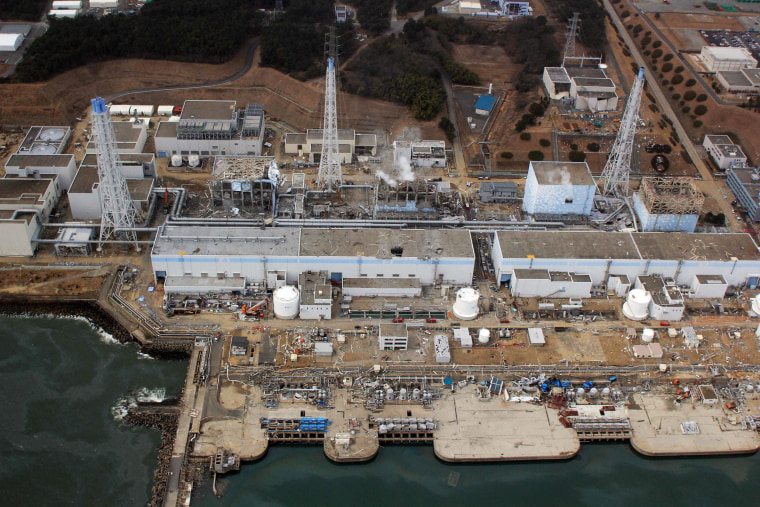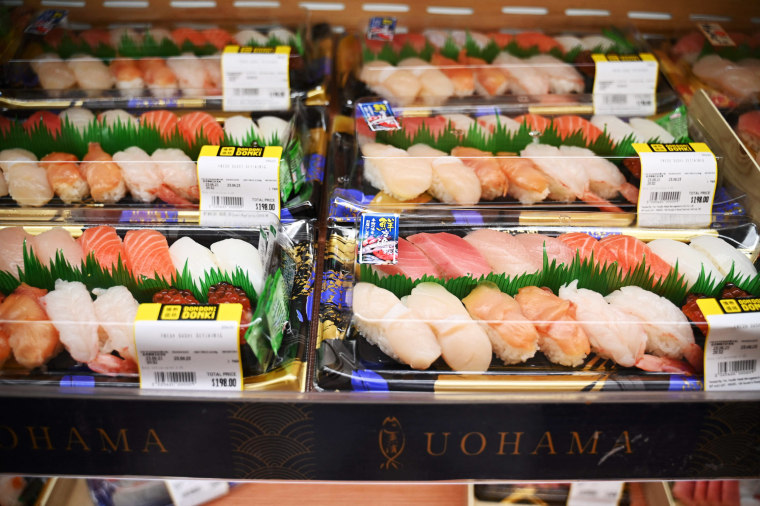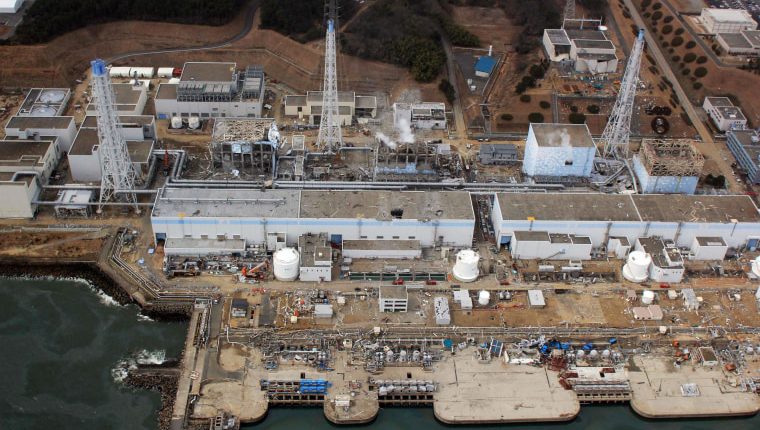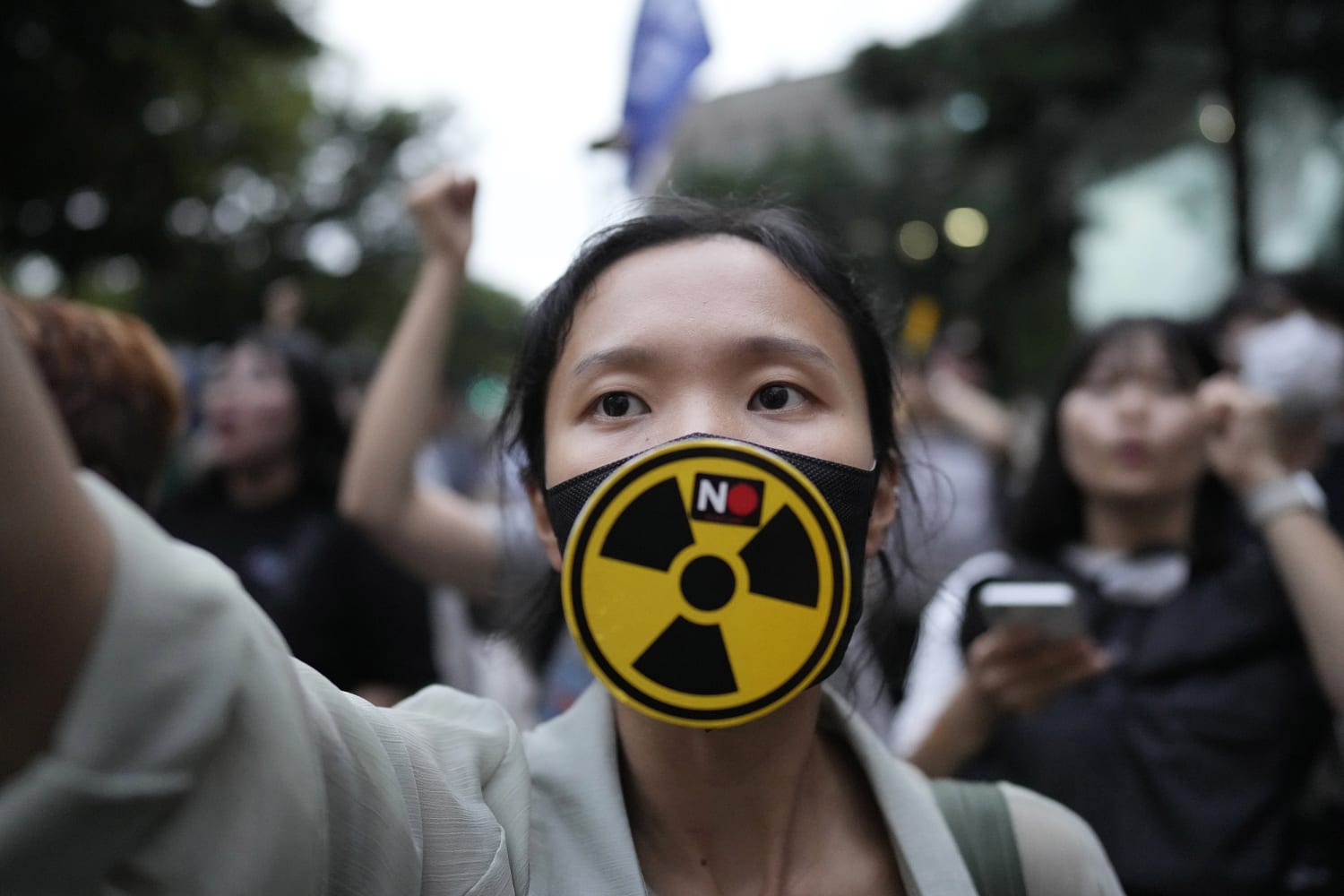Japan began to release treated radioactive water from the wrecked Fukushima nuclear plant into the ocean Thursday amid opposition from some domestic activists and loud objections from neighboring countries, including China.
The gradual discharge of an estimated 1.3 million metric tons of wastewater from the destroyed Fukushima Daiichi nuclear power plant into the Pacific Ocean began around 1 p.m. local time (12 a.m. Thursday ET), said the plant’s operator, Tokyo Electric Power Co. (Tepco).
The whole process is expected to take about 30 years to complete.
The plan has been approved by Japan’s government and the International Atomic Energy Agency, the United Nations’ nuclear watchdog, which said last month that the release met international safety standards and would have “negligible radiological impact to people and the environment.”
The process will allow the decommissioning of the plant more than a decade after a 9.0-magnitude earthquake and tsunami set off a meltdown that spewed radioactive particles into the air in the world’s worst nuclear accident since the 1986 incident at Chernobyl in what was then the Soviet Union.
The water — which is enough to fill 500 Olympic-size swimming pools and continues to build — has been used to cool fuel rods in the Fukushima plant’s nuclear reactors since the 2011 meltdown, and it is now being held in about 1,000 storage tanks on site that Japan says are almost full. Though the water is filtered and diluted to remove most radioactive elements, it still contains low levels of tritium, an isotope of hydrogen that is difficult to strip out.
Officials say that the levels of tritium will be well below what the World Health Organization considers safe and that nuclear plants around the world routinely release wastewater containing tritium, sometimes at higher levels.

Despite Japan’s efforts to reassure the public — Prime Minister Fumio Kishida visited the area last weekend to highlight the safety of the plan — it has been beset by criticism from Japanese fishing groups, who fear the impact on their livelihoods, as well as environmental activists and some scientists who say the full extent of the risks remains unknown.
Tepco has also been accused of a lack of transparency, although it has vowed to put safety first and apologized for causing concerns.
“There are a lot of uncertainties there because of the limited data we can access,” said Wu Shiu-sun, a marine scientist at the Education University of Hong Kong. “We don’t know how much water is actually going to be discharged and how long exactly the plan will continue.”
The release has also become a political and diplomatic issue, especially in countries with which Japan has historically fraught relationships.
Leading the criticism is China, the biggest importer of Japanese seafood. At a briefing Wednesday, Wang Wenbin, a spokesperson for the country’s foreign ministry, said releasing the radioactive water “blatantly transfers the risk of nuclear pollution to neighboring countries including China and the international community and puts self-interest above the long-term well-being of the people in the region and around the world.”
China has extended a long-standing ban on seafood imports from 10 of Japan’s 47 prefectures, including Fukushima and Tokyo, the capital. Officials said last month they would also increase scrutiny of food imports from the prefectures that are not banned.
Similar measures take effect Thursday in the Chinese territory of Hong Kong, the second-biggest market for Japanese seafood after mainland China.
Hong Kong’s top leader, John Lee, said the water release was an “irresponsible act” that “has blatantly ignored the inevitable risk on food safety and the irreversible contamination and damages to the marine environment.”
Hong Kong resident Samantha Ku said that she buys Japanese seafood a few times a week but that she might stop eating it as a result of the decision to release the water.
“It’s about safety,” Ku, 40, said Wednesday. “It would affect us, affect our health and body.”
Jimmy Cheng, the owner of a Japanese restaurant in Hong Kong called Superdon, said he was concerned that his customers “might be worried about eating Japanese food.”
Cheng, 34, said convincing customers would be “another challenge” for restaurants like his, which are already struggling as Hong Kong tries to revive tourism after three years of pandemic isolation.

The South Korean government reiterated this week that it sees no scientific or technical issue with plans to release the water.
“If by any chance Japan veers from its original discharge plan, the South Korean government will deem this action harmful to the safety and health of the South Korean people and request Japan to cease all operations immediately,” Park Ku-yeon, the first deputy chief of the Office for Government Policy Coordination, said Tuesday at a news briefing in Seoul.
Despite government assurances that it will closely monitor the release and test seafood for radiation, the South Korean public has expressed high levels of anxiety over the plan. Civic groups and the country’s majority opposition party have held protests around the country, including Wednesday.
Cook Islands Prime Minister Mark Brown, the chair of a forum of 18 Pacific island nations, said in a statement Wednesday that while he believes the discharge meets international safety standards, other Pacific leaders may disagree.
Experts say a lot of time and study have gone into the process.
“This is not a decision or set of steps that are happening in haste by any means, and this is a practice that is common and consistent around the world and with the nuclear energy industry,” said Marina Lorenzini of the Belfer Center for Science and International Affairs at the Harvard Kennedy School of Government.
According to data posted online by the Japanese Ministry of Economy, Trade and Industry, water with much higher levels of tritium has been discharged by nuclear facilities in countries including China, South Korea, Canada and France in line with local regulations.
Lorenzini said that the IAEA’s active engagement in the Fukushima process “makes me feel a lot more comfortable and confident with the events we see playing out today.”
The IAEA said this week that it would maintain an onsite presence at the Fukushima plant, where it opened an office last month, and publish real-time and near real-time monitoring data.
“I think we have good reason to believe that this will be a well-monitored and well-maintained operation,” Lorenzini said.
Source: | This article originally belongs to Nbcnews.com










